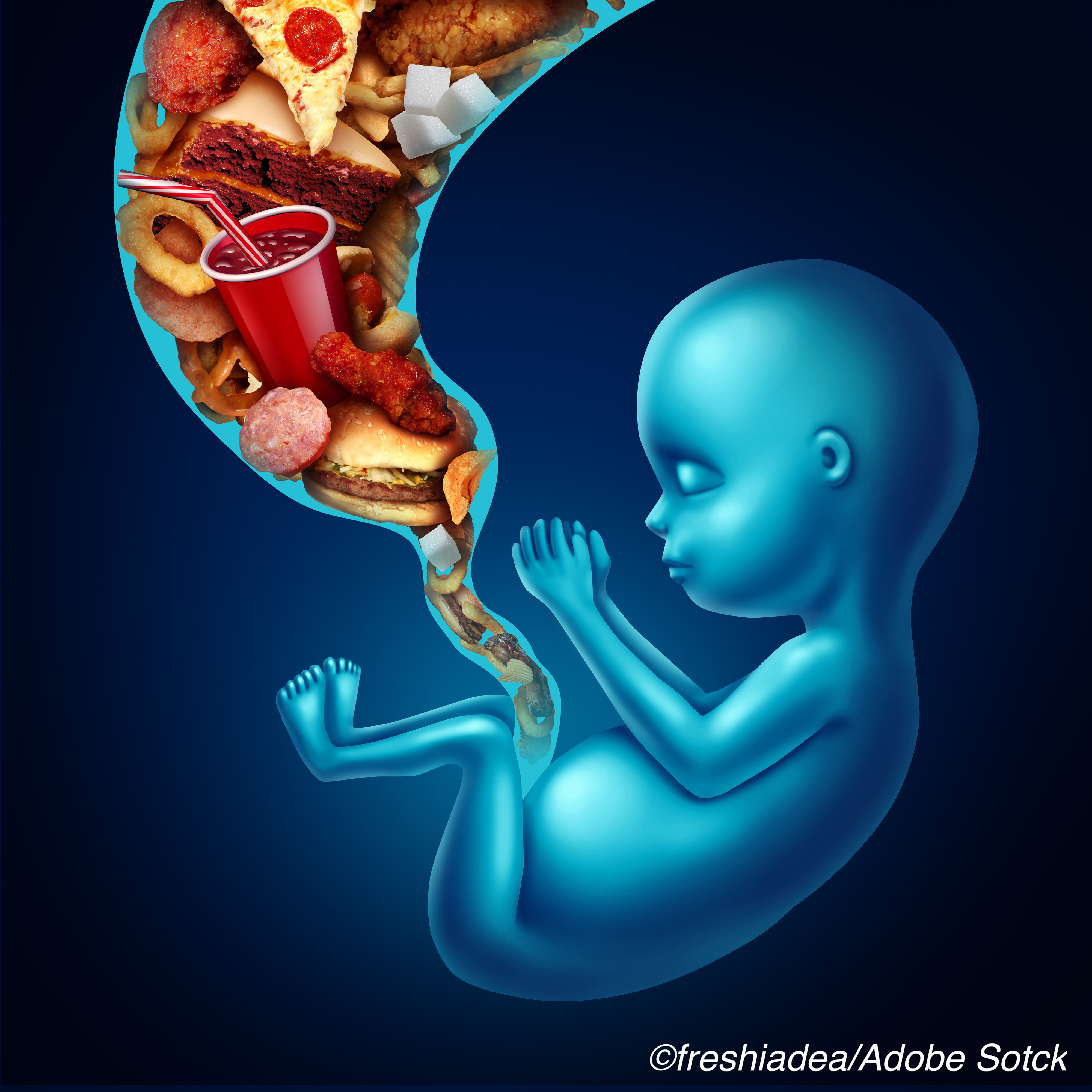
Researchers found that offspring who were exposed to maternal diabetes—either gestational or type 2 diabetes—had a 2- to 3-fold higher risk for CVD and earlier onset of CVD-related morbidity before age 35 years. Further, these risks were driven primarily by higher incidence of hypertension, type 2 diabetes, and ischemic heart disease.
“Maternal diabetes is one of the most common metabolic perturbations to which fetuses may be exposed. Fetal exposure to maternal gestational diabetes and type 2 diabetes mellitus is associated with adverse cardiometabolic health in childhood, including insulin resistance, overweight, dyslipidemia, type 2 diabetes and potentially elevated blood pressure,” wrote these researchers, led by Laetitia Guillemette, PhD, of the Children’s Hospital Research Institute of Manitoba, Winnipeg, Manitoba, Canada.
“We hypothesized that intrauterine exposure to gestational diabetes or type 2 diabetes would be associated with higher cardiovascular disease morbidity relative to no intrauterine exposure to diabetes. Additionally, we hypothesized that cardiovascular disease risk would be greater following intrauterine exposure to type 2 diabetes than intrauterine exposure to gestational diabetes,” they explained.
In this population-based study, Guillemette and colleagues included 292,546 individuals (mean age at latest follow up: 20.5 years; 49.3% female) who were born between 1979 and 2005 in Manitoba, Canada, and followed them until March 2015.
A full 96.1% were not exposed to maternal diabetes in utero, 2.8% were exposed to gestational diabetes, and 1.1% to pre-existing type 2 diabetes.
During follow-up, 5.3% of participants had experienced or developed a CVD end point or CVD risk factor. In all, 0.9% had a CVD end point (including diagnoses of cardiac arrest, myocardial infarction, ischemic heart disease, and cerebral infarction) and 4.3% had a CVD risk factor (a composite of the first incident of hypertension, dyslipidemia, and type 2 diabetes). Importantly, in participants with multiple outcomes, only the first diagnosis was considered.
The most frequent cardiovascular conditions diagnosed in the offspring were hypertension (n=8,713), type 2 diabetes (n=3,568), and ischemic heart disease (n=715).
Upon propensity score matching, elevated risks for CVD were seen in participants who had been exposed to gestational diabetes (adjusted HR: 1.42; 95% CI: 1.12-1.79), but not in those who had been exposed to type 2 diabetes (adjusted HR: 1.40; 95% CI: 0.98-2.01). The association between gestational diabetes exposure and CVD risk factors was also elevated (adjusted HR: 1.92; 95% CI: 1.75-2.11) and as was that between type 2 diabetes and CVD risk factors (adjusted HR: 3.40; 95% CI: 3.00-3.85).
Upon adjusted Cox proportional hazards regression, Guillemette et al found that exposure to diabetes in utero was associated with a higher risk of a CVD end point, with exposure to gestational diabetes carrying an adjusted HR of 1.48 (95% CI: 1.02-1.59) compared with those who were not exposed; and an adjusted HR of 1.48 (95% CI: 1.05-2.07) in those exposed to type 2 diabetes versus those not exposed. Associations for developing a CVD risk factor were similar for those exposed to gestational diabetes versus those not exposed (adjusted HR: 1.85; 95% CI: 1.69-2.02), and in those exposed to type 2 diabetes versus those not exposed (adjusted HR: 3.38; 95% CI: 3.02-3.77).
Interestingly, Guillemette and colleagues also found that intrauterine exposure to both gestational diabetes and type 2 diabetes grew more common over the study period (P˂0.001). They also found that infants who had been exposed to diabetes in utero were more likely to be born to older mothers, large for gestational age, born prematurely, and live in rural areas or belong to a household of a lower socioeconomic level.
“In this population-based administrative birth cohort study, fetal exposure to maternal gestational diabetes or type 2 diabetes, respectively, was associated with a 1.27-fold and 1.48-fold higher risk for cardiovascular disease morbidity and a 1.85-fold and 3.38-fold higher risk for cardiovascular disease risk factors before 35 years of age, compared with not being exposed to diabetes in utero,” wrote Guillemette and colleagues.
“Screening children with in utero exposure to diabetes for cardiovascular disease risk factors might help to evaluate the future burden related to cardiovascular disease in the population,” they concluded.
Study limitations include the reliance on administrative databases for data and algorithms not been validated in pediatric populations, the lack of clinical or lifestyle data known to affect CVD risks, and maternal factors such as diabetes control during pregnancy and indigenous status.
-
In adolescents and young adults, intrauterine exposure to maternal diabetes was associated with higher cardiovascular morbidity and risk before 35 years of age.
-
In this population-based cohort, hypertension, type 2 diabetes, and ischemic heart disease were the most common manifestations of these CVD risks.
E.C. Meszaros, Contributing Writer, BreakingMED™
Guillemette reported support from the Canadian Institutes of Health Research (CIHR) Frederick Banting and Charles Best Canada Graduate Scholarship – Doctoral Award, a Fonds de recherche en santé – Québec doctoral training award, and the University of Manitoba Graduate Enhancement of Tri-Council Stipends program. She was also supported by a Research Manitoba grant to the DEVOTION research cluster.
Cat ID: 41
Topic ID: 83,41,914,12,41,669,918


